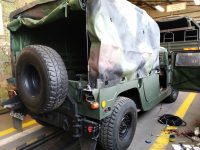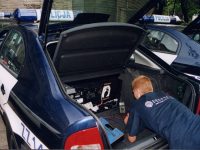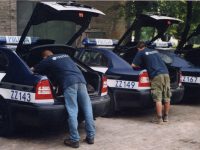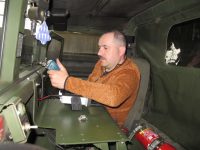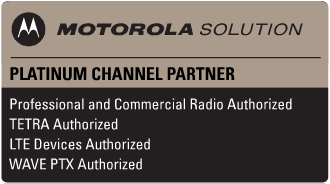Our company is able to install radiotelephone systems in all types of vehicles (including armoured vehicles). Most frequently, this type of installations is successfully executed in radio communications networks, where a base or/and retransmission station has already been fixed. Due to this fact, a dispatcher is able to communicate with vehicles on longer distances than the ones that seem to be assured by hand-held radio sets, which the vehicle crews can be equipped with. Drivers have an opportunity to conduct direct conversations between their vehicles (e.g. in a convoy), however the range of the devices they use is significantly shorter than in case of the communication with the dispatcher (unless the network is equipped with a retransmitting station).
A typical standard installation involves fixing a power supply system, possibly with some audio accessories, installing an antenna and cabling a vehicle. Vehicles differing from usual standards require preparation of specific accessories that would enable appropriate installation of the necessary devices. Vehicles which use power supply systems different from 12V need to have special voltage converter installed. Tuning the antenna and beginning to use a radiotelephone is the final stage of the installation process.
A vehicle’s power supply unit is the point where a radiotelephone installation and a wiring system meet. Therefore, it must be constructed in the way that would prevent any possible disturbances the wiring system might cause to the appropriate performance of the radiotelephone installation. On the other hand, switching on the radiotelephone cannot disturb appropriate functioning of any already existing systems the vehicle is equipped with. In case it is necessary to supply the radiotelephone with power different from 12V (lorries, railway engines, etc.) high-efficiency voltage converters are used.
Rx/Tx system
A radiotelephone together with a microphone loudspeaker are fixed in places allowed by the structure of a vehicle to ensure safe and comfortable use of the device while driving. In case the structure of a vehicle provides a limited space for installing a radiotelephone, a special remote mounting adapter kit can be used. This kind of solution is offered by a radiotelephone manufacturer and is based on disassembling of a control panel and fixing it to one of dummy plugs. The second dummy plug is fixed to a Rx/Tx module of a radio and both parts are clipped together by means of a dedicated connection cord. Due to such a solution, a radiotelephone can be, for instance, installed in a boot of a vehicle and its much smaller control panel next to an armrest.
Aerial system
An appropriate location and the right tuning of the antenna in a vehicle is the ‘final touch’ of the whole enterprise. The right execution of the aerial system in the vehicle significantly affects the communications range and is even more important than the Tx power of the used device. The type of the applied antenna basically depends on the user’s requirements and usually constitutes a kind of compromise between its functionality and effectiveness. In case of vehicles equipped with a plastic roof, we can offer special solutions that would properly tune the aerial working in such conditions. A different solution must be applied in vehicles such as: railway engines, tramways or trolley buses. These means of transport require installation of traction-based aerials which are obviously accompanied by all sorts of the required certificates including the safety ones. Another issue is the functionality of aerials, which can be divided into single-band or multi-band ones. A very special type of multi-band aerials is, for instance, camouflage antenna, where one body can contain a GPS, a VHF or a car radio antenna. This solution is widely used by the police.
Additional accessories
In some special cases the users are likely to require certain, non-standard functions of a radiotelephone. Some of the examples are camouflage installations of a radiotelephone, also fitting some extra loudspeakers or some extra control panels, for instance in fire trucks. In the times of digital radiotelephones and consideration of their telemetric abilities, the options of non-standard solutions are practically unlimited.
Cabling
Briefly speaking, a user of a vehicle should not be bothered by the existence of any cables in his car. Both, electrical wiring and antenna cabling are located in such places of a vehicle structure that allow them to be invisible as well as not exposed to any mechanical damage. None of the wires or cables located in a vehicle are supposed to cause any disturbance of appropriate working of any other systems present in the vehicle, and additionally, placing the power supply cables must fully comply with all fire safety requirements.





